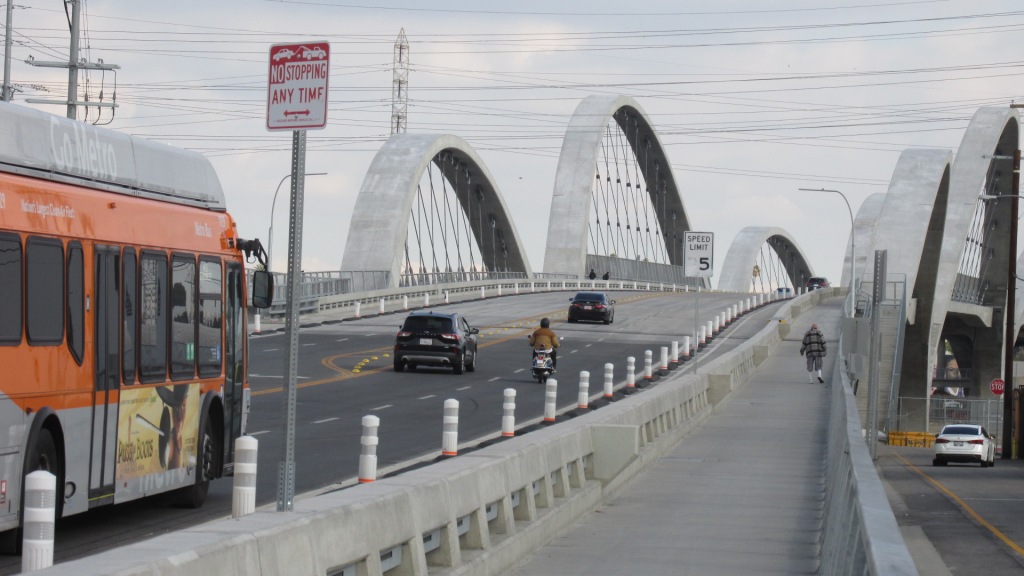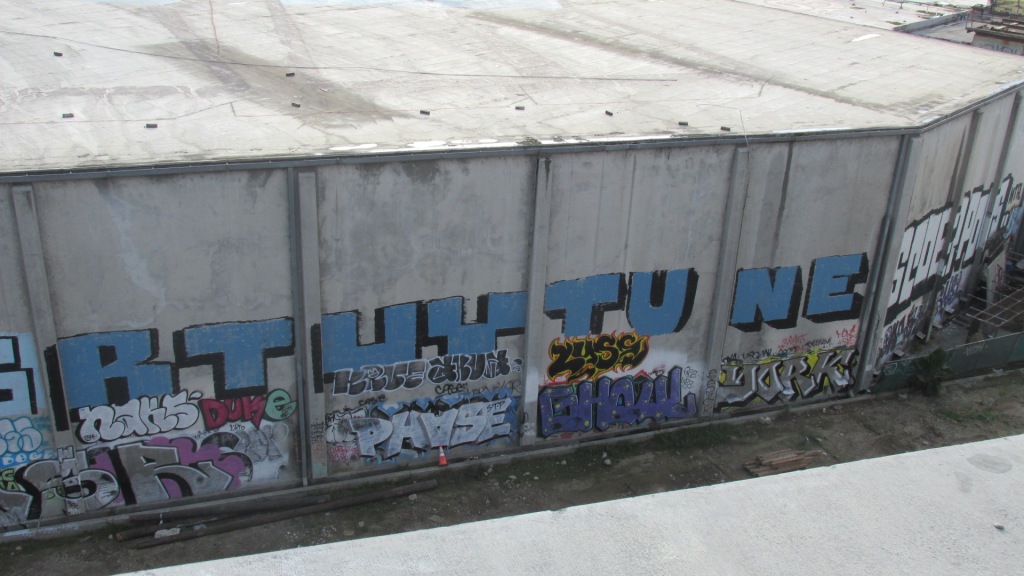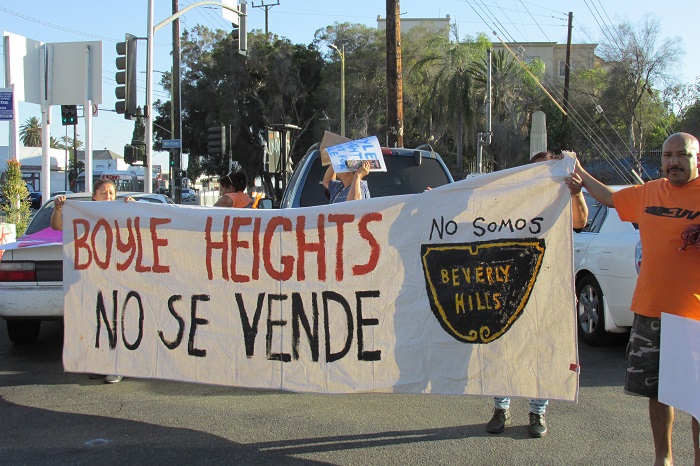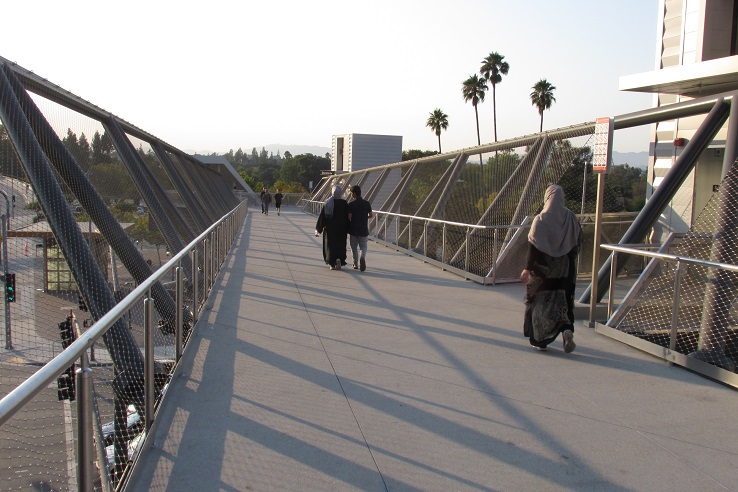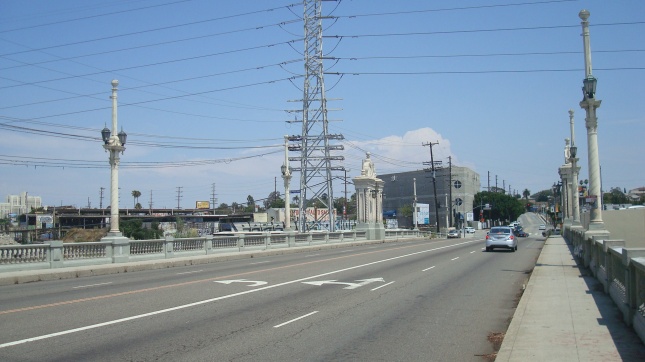
In late November, the LA City Council’s Planning & Land Use Management (PLUM) Committee considered giving Times Mirror Square landmark status. It was an interesting hearing. The application nominating the site for Historic-Cultural Monument status was submitted by a group of people, including local preservationists Kim Cooper and Richard Schave, as well as architectural historian Alan Hess. There’s really no argument that Times Mirror Square has played a huge part in LA’s history. The debate centered around how much of it should be preserved.
As someone who grew up with newspapers, I have to remind myself that these days most people under 30 see them as a useless holdover from the past. The number of print publications has fallen dramatically over the past 20 years, and while a number of major papers continue to publish on-line, they’re struggling to reach an audience. These days a lot of Americans get their “news” from sources that don’t even claim to be news outlets. Do people under 30 have any idea how powerful and influential major newspapers were before the internet? From the early days of the 20th century the Times had a huge impact on local politics, the regional economy, and the built landscape. If the Times had never existed, LA would probably look very different than it does today.

Los Angeles Times Building at First and Spring, designed by Gordon Kaufman
At the PLUM hearing, nobody questioned the site’s historical significance. The debate was all about the structure, or really the structures. Times Mirror Square was actually built in pieces over decades. The first segment, located at First and Spring and designed by Gordon Kaufman, was completed in 1935. In 1948 the owners extended the complex to the corner of Second and Spring, and the architect for this phase was Rowland Crawford. The final segment, built on the west side of the site in 1973, was designed by William Pereira. (And if you really want to dig into the details, you’d also have to count the plant building and the parking structure.)

The Mirror Building at Spring and Second, designed by Rowland Crawford
For those who don’t know much about the Times’ history, here’s a quick summary. The paper was founded at the end of the 19th century and played a major role in LA’s development throughout the 20th. In its early years, editor Harrison Gray Otis made the paper successful through ardent boosterism, pushing hard for LA’s growth. The Times played a key role in advocating for the construction of the LA Aqueduct. Otis’ conservative, pro-business policies were shared by his successors, Harry Chandler and Norman Chandler. But things changed when Otis Chandler took over in 1960. The Times adopted a more independent perspective and expanded its staff, striving to become a national paper on the level of the New York Times. The change was quickly apparent. While in the past the Times had fanned the flames of bigotry, soon after Otis Chandler took over it ran a series exposing racism in the John Birch Society. When Richard Nixon lost the race for California governor, he blamed the LA TImes. Before 1960 the paper had never won a Pulitzer. Since 1960 it’s won 44.
Unfortunately, in 2000 the Times was sold to the pack of idiots at the Tribune Company. They spent over 15 years turning what had been a regional media giant into a pathetic shadow of its former self. In 2018 the paper was finally freed from the toxic grasp of the Tribune when it was purchased by billionaire Patrick Soon-Shiong. Not long after purchasing the Times, Soon-Shiong announced that its offices would be relocating to El Segundo, and that Times Mirror Square would be sold to developer Onni Group.
And this is what the debate at the PLUM hearing was all about. Onni has proposed preserving the Kaufman and Crawford buildings, but getting rid of the Pereira addition in order to build two residential towers. The preservationists who nominated Times Mirror Square wanted to landmark the entire site, which would make development more difficult.

Times Mirror Headquarters at the corner of First and Broadway, designed by William Pereira

View of Times Mirror building along Broadway

City Hall and the Clara Shortridge Foltz Criminal Justice Center reflected in the facade of the Times Mirror building
Back in September, the Cultural Heritage Commission (CHC) sided with the preservationists. In spite of a report from GPA Consulting that took great pains to play down the quality of the Pereira building, the CHC voted to include it in their recommendation, saying that all of Times Mirror Square was worthy of landmark status. Interestingly, GPA also dug deep into the Pereira firm’s archives to question whether the architect designed the project himself. They seemed determined to block the nomination of that segment, which is exactly what Onni Group wanted. But it’s commonplace for the principle of an architectural firm to assign a team to complete the bulk of the work on a project. While GPA argued at the hearing that the Pereira building was not a significant example of the architect’s work, many others, including architectural historian Hess, insisted that it was.
This is the second time I’ve run across GPA in covering preservation issues, and I have to say I’m not impressed by their work. When DLJ Capital bought the 800 Traction building and decided to evict the Japanese-American artists who lived and worked there, the new owners brought in GPA to evaluate the structure’s history. While GPA found that the building deserved landmark status, their report managed to avoid any mention of the Japanese-American community that had lived in the area for decades. They also whitewashed 800 Traction’s history by omitting references to the Japanese-American artists who had lived and worked in the building for years, some going back as far as the 80s. And somehow GPA failed to note that some of these artists played a key role in creating the Downtown Arts District. Seems to me that GPA Consulting basically serves as a hired gun, dedicated to helping real estate investors push their projects forward.
History is a complicated thing. Most of us know relatively little about the city we live in. Sometimes it turns out we aren’t even really familiar with the things we think we know well. In early December I went down to Times Mirror Square to shoot some photos. I have to say the visit was an eye-opener. I bet I’ve walked by the building a thousand times, but while I was taking pictures I realized there was a lot that I’d never really seen. Walking past the main entrance on First Street I’d certainly noticed the contrast between the Kaufman and Pereira buildings, but I’d never paid any attention to the Crawford building. I’d never looked closely at the lines or the materials. I’d never read the inscriptions on the First Street facade. I’d never really thought about the way the Pereira building shapes the space.
And I’d never noticed this plaque near the corner of Spring and Second.

Looking at it made me think about the many changes that have happened in Downtown, and reminded me that things will always keep changing. There are whole histories that have been bulldozed and buried. Thousands of stories I’ll never know. And while I believe preservation is important, we can’t save every old building, or even every beautiful building. Inevitably, the City will keep growing. It can’t remain static. So we have to weigh these things, and ask whether the changes are happening for better or for worse.

View of Times Mirror Square from Spring
A number of people spoke at the PLUM Committee hearing, and again, the discussion was pretty all much about whether the Pereira structure should be preserved. Obviously, the developer reps and the business community argued against preserving that portion. The Committee also heard from a number of union workers who shared that view. On the other side you had preservationists arguing that the Pereira addition was an important example of the architect’s work, and an important part of the building’s history.
I agree with the preservationists. While all three architects involved with Times Mirror Square did impressive work, Pereira had the most extensive relationship with the LA area. He played a crucial role in shaping the city’s modernist period, and designed some of its most remarkable structures, including CBS Television City, Otis College of Art & Design (original campus), and the Los Angeles County Museum of Art (original campus). He also made significant contributions to Los Angeles International Airport,
the University of Southern California, and Occidental College. Pereira was a major player in creating the look of mid-century LA.
As for Times Mirror Square, I completely agree with the people who say the Pereira addition has a cold, corporate feel. That doesn’t make it bad architecture. In fact, it has a striking sculptural strength, and the way it shapes the space around it is impressive. Actually, I think it’s an appropriate expression of the power and position the Times held back in the 70s. Does it fit with the older buildings? Depends on what you mean by “fit”. The contrast between the Kaufman and Pereira structures is jarring, and I’m certain that’s what Pereira wanted. And remember, we’re talking about LA architecture. In most other cities this kind of mash-up would stand out as a bizarre oddity. In this city, it’s just one of many examples of extreme stylistic conflict. Over the last hundred years, the story of LA architecture has been all about brash, experimental eclecticism.

Pereira building in foreground and Kaufman building in background
But it was pretty clear where the PLUM Committee hearing was going. The developer didn’t want the Pereira building to be declared historic, and that was a pretty strong sign the PLUM Committee didn’t want that to happen either. They’re very accomodating. Anybody who thought replacing former Chair Jose Huizar with Marqueece Harris-Dawson might change things was living in a fool’s paradise. At this PLUM hearing the main order of business appeared to be giving real estate investors whatever they asked for, just like when Huizar was running the show.
I did think it was interesting that people kept bringing up housing as an important issue. The developer, the union folks, the PLUM Committee all kept talking about how Downtown needed housing badly, and how Onni’s proposed luxury skyscraper would help ease that need. That’s weird. When I look at web sites for residential buildings in Downtown I find that a lot of them are offering discounts for signing a lease. Some are offering up to two months free rent. You wouldn’t think they’d be offering such great deals if housing was in really short supply.
Something else that’s weird. Onni’s reps are claiming that there’s a housing shortage in Downtown, but at one of their other buildings not too far away they’re turning residential units into hotel rooms. A few years ago the developer opened Level Furnished Living at Ninth and Olive. It was approved as 303 residential units, but in 2017 local activists discovered that Level’s owners were actually offering the units as hotel rooms. At first they were doing it illegally, but City Hall was good enough to grant them a TORS conversion for 97 units. This stands for Transit Occupancy Residential Structure, and basically it means you’re turning housing into hotel rooms. And it looks like were going to see more of this. Another developer has filed an application to build a 27-story high-rise at 949 South Hope. The project description calls it a residential tower, but if you look at the requested approvals you’ll see that the developer is asking for the TORS designation up front. In other words, once the building is open it could be used as housing or hotel rooms.
This is a brilliant way to reduce vacancy rates in Downtown. Obviously Onni is really on to something. If you can’t market your units as apartments or condos, just turn them into hotel rooms. That way you’re turning a profit even if there really is no demand for housing. And the best part is, once you slap on the TORS designation, these units don’t have to be counted when calculating Downtown’s vacancy rate. If an apartment or condo is sitting empty, then it’s a vacant unit. If it’s a hotel room, it’s just an empty hotel room. It’s sheer genius. The City can reduce the Downtown vacancy rate just by calling these units something else.
Of couse, if Onni is turning residential units into hotel rooms at Level, you’ve got to ask if the need for housing in Downtown is really that severe. And at the same time, you have to ask if the PLUM Committee has any real interest in easing LA’s housing crisis. More likely they’re just helping a developer create another valuable asset for their portfolio.
After public comment, the PLUM Committee members spoke briefly, and it was pretty clear they were all on board with Onni’s agenda. They voted to recommend granting historic status to the Kaufman and Crawford buildings, but not to the Pereira building. In early December the full City Council adopted the Committee’s recommendation. Looks like Onni will get to go forward with its two residential towers. And if we find out in a few years that those residential towers have somehow turned into luxury hotels, well, that’s just the way things work in the City of LA.


